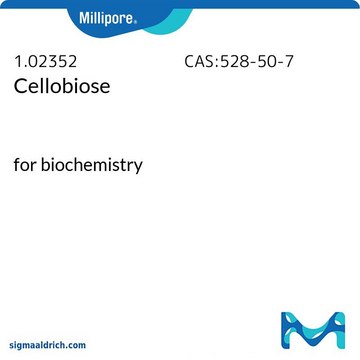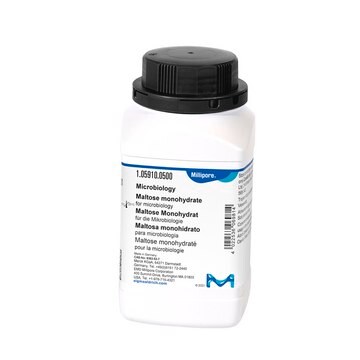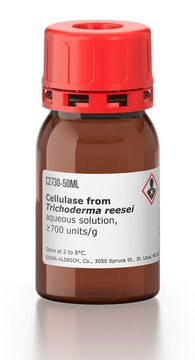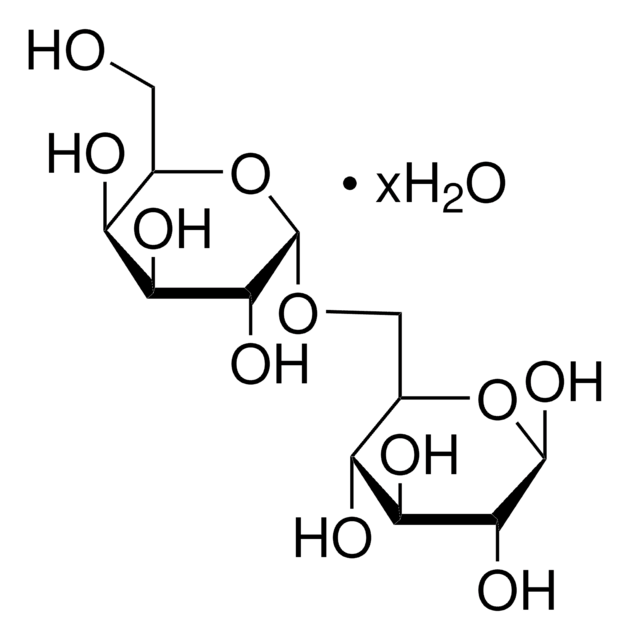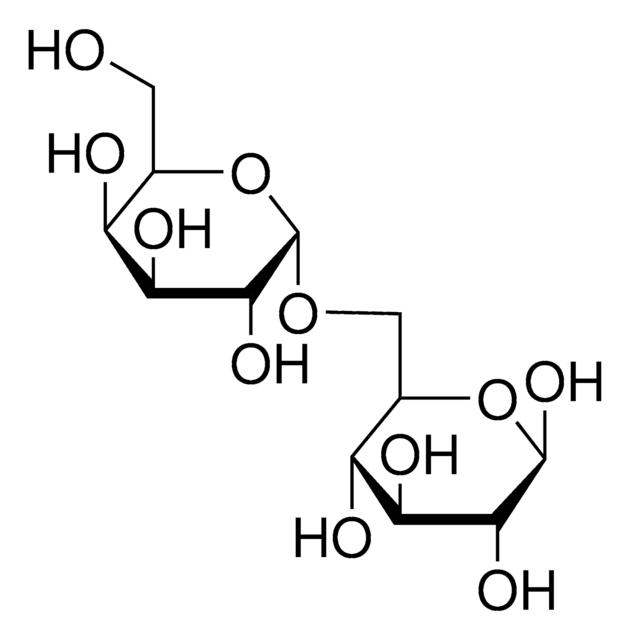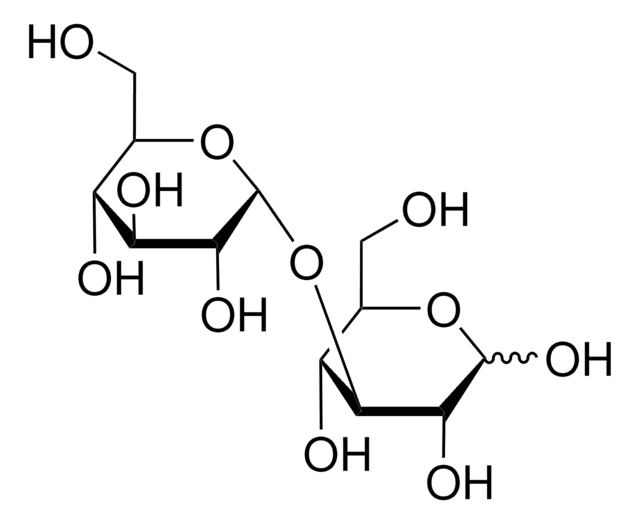C7252
D-(+)-Cellobiose
≥98% (HPLC)
Synonyme(s) :
β-D-Glc-(1→4)-D-Glc, 4-O-β-D-Glucopyranosyl-D-glucose
About This Item
Produits recommandés
Source biologique
plant
Niveau de qualité
Essai
≥98% (HPLC)
Forme
powder
Activité optique
[α]/D 34±1, c = 10% (w/v) in water
Technique(s)
HPLC: suitable
Couleur
beige
Pf
239 °C (dec.) (lit.)
Solubilité
water: 50 mg/mL, clear, colorless
Température de stockage
room temp
Chaîne SMILES
OC[C@@H](O)[C@@H](O[C@@H]1O[C@H](CO)[C@@H](O)[C@H](O)[C@H]1O)[C@H](O)[C@@H](O)C=O
InChI
1S/C12H22O11/c13-1-4(16)7(18)11(5(17)2-14)23-12-10(21)9(20)8(19)6(3-15)22-12/h1,4-12,14-21H,2-3H2/t4-,5+,6+,7+,8+,9-,10+,11+,12-/m0/s1
Clé InChI
DKXNBNKWCZZMJT-WELRSGGNSA-N
Vous recherchez des produits similaires ? Visite Guide de comparaison des produits
Description générale
Application
- comme constituant d'une solution de sucre pour un test d'évaluation de la perméabilité au cellobiose-mannitol.
- dans la préparation de solutions de lyophilisation pour étudier sa capacité à protéger la β-galactosidase d'une perte d'activité enzymatique et de modifications de structure secondaire durant le stockage.
- comme substrat de fermentation/croissance pour faire croître Clostridium thermocellum et étudier ses impacts sur les changements qualitatifs et quantitatifs de la composition du cellulosome.
Autres remarques
Code de la classe de stockage
11 - Combustible Solids
Classe de danger pour l'eau (WGK)
WGK 1
Point d'éclair (°F)
Not applicable
Point d'éclair (°C)
Not applicable
Équipement de protection individuelle
Eyeshields, Gloves, type N95 (US)
Faites votre choix parmi les versions les plus récentes :
Déjà en possession de ce produit ?
Retrouvez la documentation relative aux produits que vous avez récemment achetés dans la Bibliothèque de documents.
Les clients ont également consulté
Notre équipe de scientifiques dispose d'une expérience dans tous les secteurs de la recherche, notamment en sciences de la vie, science des matériaux, synthèse chimique, chromatographie, analyse et dans de nombreux autres domaines..
Contacter notre Service technique


